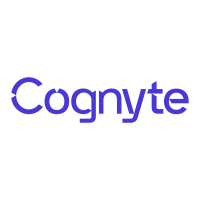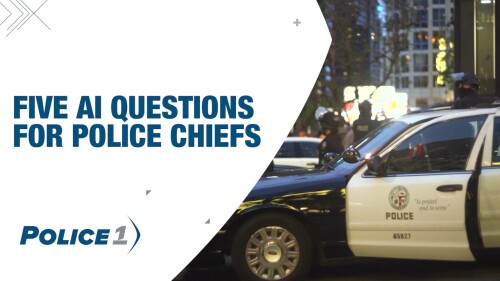Policing is entering a new era driven by technological advancements, with technology now actively advancing investigations rather than simply supporting them. As vast amounts of information flow in from diverse sources, responsibly applied generative AI has become an essential investigative tool. Rather than replacing investigators, AI enhances their capabilities, enabling them to process and analyze complex data more efficiently.
This article explores how generative AI transforms unstructured data into actionable intelligence, improves accuracy and maintains investigative integrity. While the full integration of these generative AI capabilities represents a comprehensive vision for the future of policing, it’s important to note that all of this is currently possible with existing technologies. No single agency has implemented the complete suite of tools and workflows outlined here, but portions or variations are underway through pilot programs to test their feasibility and effectiveness.
| RELATED: Generative AI 101 for police leaders: What chiefs need to know now
Converting unstructured data to intelligence
In traditional investigations, paperwork and data from reports, interviews and surveillance logs often created challenges in finding important details. Generative AI fundamentally shifts this approach by quickly ingesting, organizing and synthesizing information from a wide range of sources. Investigators now spend less time searching for critical information and more time interpreting the bigger picture.
It’s important to clarify that generative AI does not create investigative reports out of thin air. Instead, it analyzes data collected during an investigation — such as incident reports, interviews, surveillance logs and digital evidence — and uses advanced algorithms to uncover patterns, highlight probable scenarios and suggest potential outcomes. The AI’s role is to help investigators make sense of large volumes of complex, unstructured data, guiding them toward the most relevant leads and insights while leaving the final judgment and report writing in human hands.
This means generative AI acts as an analytical tool, enhancing the investigator’s ability to interpret evidence and anticipate developments rather than replacing their expertise. By generating insights and highlighting connections, AI empowers investigators to make more informed and timely decisions, but responsibility for conclusions and official reporting remains with the investigative team.
As Chief David Norris of the Menlo Park (California) Police Department emphasizes, “It is incumbent on us as police leaders to ask questions about how we own, explain and maintain security and privacy with these technology advances to our public.” This underscores the need for transparency, accountability and thoughtful stewardship as agencies integrate generative AI into investigative workflows.
Teams can distill lengthy incident reports and witness statements into essential insights more efficiently. AI identifies key people, locations and events, helping investigators concentrate on the most relevant aspects. Interview analysis is expedited, with AI extracting admissions and inconsistencies that may be easily overlooked. Reviewing surveillance logs is also streamlined, as AI flags suspicious patterns or repeated vehicles almost instantaneously. Even greater, reviewing video footage that once took hours can now take seconds.
Visualization tools: Generating link charts and timelines
Visualizing relationships and timelines has transformed investigative work, enabling law enforcement to map out complex webs of connections and chronologies with unprecedented precision — effectively eliminating the need for traditional pinboards. Generative AI uses sources such as case files, cell records, surveillance footage and social media to create comprehensive link charts.
AI-generated timelines reconstruct event sequences with greater reliability and transparency, revealing patterns that might otherwise remain hidden. As Chief Rachel Tolber of the Redlands (California) Police Department notes, “Consideration of these concerns prior to implementation, sound policy and auditing measures are all necessary to ensure transparency and accountability.” She highlights the importance of thoughtful planning and robust oversight when integrating visualization tools into investigative workflows, ensuring both effectiveness and integrity.
Case examples: Gangs, narcotics, fraud and fentanyl supply chains
AI has enabled gang task forces to uncover relationships and recruitment patterns in a fraction of the time previously required. In narcotics investigations, AI processes wiretap transcripts and buy reports, highlighting emerging trends for rapid response. For fraud cases, AI analyzes thousands of transactions and emails to detect schemes that might have been missed.
Addressing the fentanyl crisis, AI mapping of supply chains exposes critical choke points and identifies key players in transnational networks and money laundering. Tolber emphasizes the importance of proper training to ensure ethical use and prevent bias, stating, “There are current courses being offered locally and online. Availing our staff and supervisors of this training, along with specific training for specific technologies, is one way to ensure ethical use and prevent bias.”
Integrating comprehensive training for both staff and supervisors ensures that adopting AI-driven investigative tools supports not only effective case work but also the highest standards of integrity and fairness.
Audit logs and disclosure-ready outputs
Maintaining credibility in court relies on transparency. While the specific algorithms used by generative AI may not be fully disclosable due to proprietary restrictions, transparency is achieved through other means. Governed generative AI maintains detailed audit logs and tracks every analytic action, prompt and output.
Transparent data dashboards allow investigators, legal teams and courts to review sources, decisions and workflow steps without exposing sensitive code. Integration of blockchain technology further enhances transparency by creating immutable records that track chain of custody and every modification or access to case data. Robust digital records supported by these technologies ensure investigative work is defensible and supports justice. Outputs are formatted to meet legal requirements, including clear citations, version control and comprehensive audit trails.
Trust and validation: Analyst oversight and chain of custody
Human oversight is essential, with every AI-generated output reviewed by an investigator for accuracy, clarity and context. Investigators are responsible for questioning AI findings and annotating any discrepancies.
“Human cross-checking and human oversight are crucial to all aspects of policing. The integrity of our profession and the value of our public trust depend on it,” Norris said. He underscores the importance of maintaining rigorous human involvement in every step, reinforcing reliability and public trust in both investigative outcomes and the adoption of AI technologies.
Case triage workflow
Modern workflows leverage AI to streamline case management by ingesting files — such as CSV exports — from Records Management Systems (RMS). This enables rapid processing of both active cases and those pending assignment. The updated workflow includes the following:
Case triage workflow
- Data ingestion: CSV or similar files containing unstructured data from the RMS are uploaded into the AI platform, ensuring that all available information from assigned and unassigned cases is captured.
- Preprocessing: AI immediately categorizes incoming data, flags sensitive content and identifies key case attributes, making sense of diverse and unstructured information.
- Prioritization and linking: The system analyzes case details to assign priorities and — based on RMS capabilities — can suggest related cases or identify patterns across multiple incidents, supporting more effective resource allocation.
- Visualization: Dynamic link charts and timelines can be generated to clarify complex relationships and event sequences, helping investigators quickly grasp connections between cases.
This approach maximizes the value of RMS data, allowing AI to efficiently categorize, prioritize and link cases while maintaining rigorous analyst oversight and robust disclosure practices.
Future outlook and responsible generative AI adoption
The mission to serve the community is strengthened by the use of AI, which brings greater clarity, speed and transparency to investigations. The future of investigative work depends on responsible adoption of generative AI — amplifying potential while maintaining a firm commitment to ethics, accuracy and trust.
As agencies continue exploring and implementing portions of these technologies through trials and targeted adoptions, the path toward full realization becomes clearer, ensuring that innovation serves justice responsibly.
Disclosure checklist
- ☑️ All AI recommendations are reviewed and validated by a trained investigator
- ☑️ Audit logs accompany every output
- ☑️ Source document citations are included in every summary
- ☑️ Version histories and analyst annotations are preserved
- ☑️ Compliance with disclosure standards is verified at each stage
Investigator quick guide: Practical tips and reminders
- ☑️ Human review is always required for subsequent steps
- ☑️ Annotate uncertainties and discrepancies as necessary
- ☑️ Preserve all logs and version histories
- ☑️ Consult IT/security for governance and data handling
- ☑️ Stay current with legal and ethical protocols
Training discussion points
- When an AI system flags a lead your team wouldn’t have found manually, what validation steps should analysts take before acting on it?
- How should investigators document AI-generated insights to maintain a defensible chain of custody?
- What’s the best way to integrate AI ethics and bias awareness into investigative training — once a year or as part of every case debrief?
- How can leaders balance the pressure for faster results with the need for transparency and auditability?
Tactical takeaway
Build AI validation into every investigative step — if it isn’t reviewable, it isn’t reliable.










